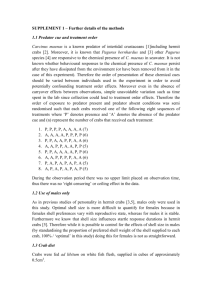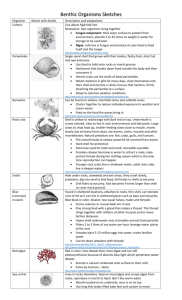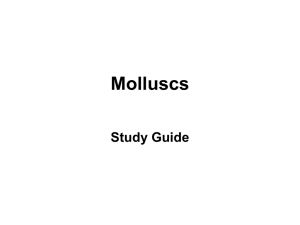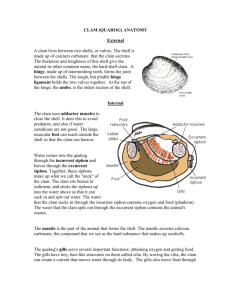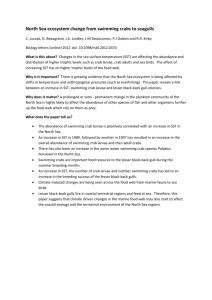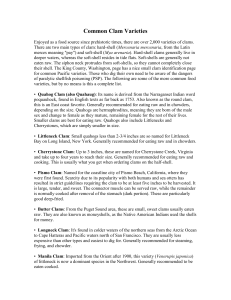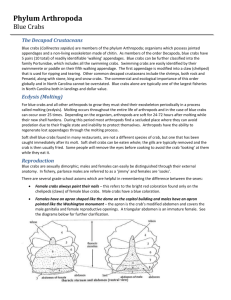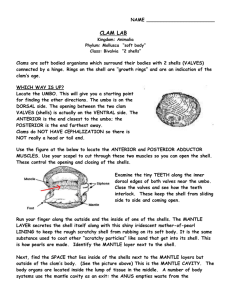research paper— Center for Teaching and Learning
advertisement
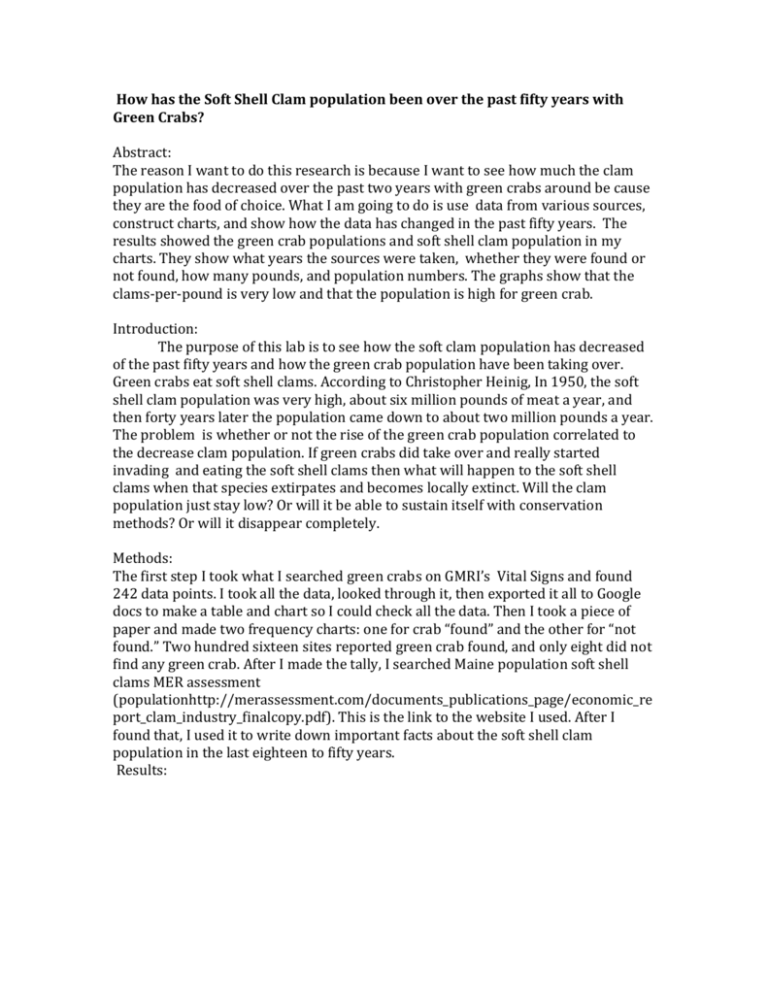
How has the Soft Shell Clam population been over the past fifty years with Green Crabs? Abstract: The reason I want to do this research is because I want to see how much the clam population has decreased over the past two years with green crabs around be cause they are the food of choice. What I am going to do is use data from various sources, construct charts, and show how the data has changed in the past fifty years. The results showed the green crab populations and soft shell clam population in my charts. They show what years the sources were taken, whether they were found or not found, how many pounds, and population numbers. The graphs show that the clams-per-pound is very low and that the population is high for green crab. Introduction: The purpose of this lab is to see how the soft clam population has decreased of the past fifty years and how the green crab population have been taking over. Green crabs eat soft shell clams. According to Christopher Heinig, In 1950, the soft shell clam population was very high, about six million pounds of meat a year, and then forty years later the population came down to about two million pounds a year. The problem is whether or not the rise of the green crab population correlated to the decrease clam population. If green crabs did take over and really started invading and eating the soft shell clams then what will happen to the soft shell clams when that species extirpates and becomes locally extinct. Will the clam population just stay low? Or will it be able to sustain itself with conservation methods? Or will it disappear completely. Methods: The first step I took what I searched green crabs on GMRI’s Vital Signs and found 242 data points. I took all the data, looked through it, then exported it all to Google docs to make a table and chart so I could check all the data. Then I took a piece of paper and made two frequency charts: one for crab “found” and the other for “not found.” Two hundred sixteen sites reported green crab found, and only eight did not find any green crab. After I made the tally, I searched Maine population soft shell clams MER assessment (populationhttp://merassessment.com/documents_publications_page/economic_re port_clam_industry_finalcopy.pdf). This is the link to the website I used. After I found that, I used it to write down important facts about the soft shell clam population in the last eighteen to fifty years. Results: The tables show data for soft shell crab and green crab populations from 1950 ( ten million pounds), the number was and 2015. Discussion/conclusion: So the original problem is that green crabs are taking over the Maine coast, and a large reflection in soft shell clams. I thought that if green crabs really started to invade, then the clams would go extinct, or it would show a low population and would be hard for the clammers to dig clams in the mud flats. The second part of my hypothesis was right. The soft shell clam population is very low because the green crabs feed off of them. My data above, shows the populations and found/not found amounts of the soft shell clam and green crab. Two hundred sixteen sites had green crabs and eight were did not. Overall, my data shows that the population of soft shell clams has gone down by a lot and the green crab population has gone up and there are more found on sites. To use this information, scientists would use this data to looks at the populations and then go out on a lobster boat or any boat and check all my data to see if its right and continue on from there. I had trouble with Google docs because I had never used it before so I kept on trying and I figured out how to edit my charts and drag them to this data sheet. Plus, I don’t know if the green crab population that I used for data is in the same location as the soft shell clam population/location. Also on the locations, the Vital Signs and the MER assessment data are not from the same locations. I think what I need to do is to continue further with the populations and the study and use experimental as a road to go down and go out to the water and check how my data worked out in the actual waters, I believe that it is true because the field trips I have been on with my class have a lot of information on how many green crabs we found when going to locations on the east coast.


